 |
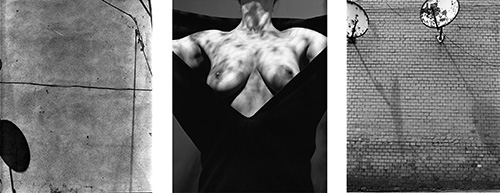 |
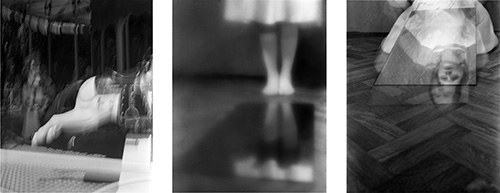 |
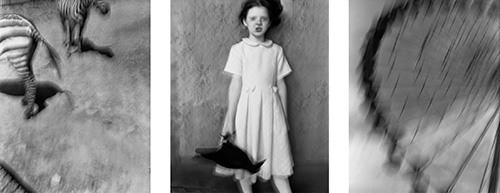 |
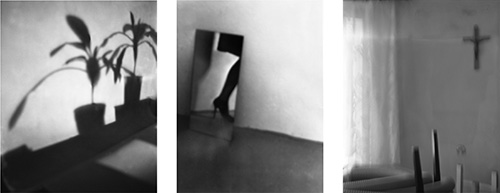 |
| Silesian Ulysses. Transitoriness Recorded in Light |
| What can be found of James Joyce's work in Silesian Ulysses? What is left of Silesia in Silesian Ulyssses? The first question is irrevocably provoked by the title of the photographic series by Joanna Chudy, while the second one comes into view at the moment of our confrontation with the works of the series themselves. Both questions, however, get entwined into a single knot when we attempt to answer them. Chudy's project has not been carried out in the manner of a reportage and it is far from a document that concentrates on a sociological analysis. In spite of the information that the pictures were taken during a journey in Upper Silesia (in Gliwice, Rybnik, Racibórz or Tarnowskie Góry, among other places), it is hard to find such landscapes among them which would bring to mind a concrete place or region. This is because the observed reality of mining settlements in Silesia has become an excuse to present a journey that reaches far beyond our tangible space/time continuum. Joanna Chudy gives an existential dimension to this journey, creating a treatise on transitoriness. The topos of a journey recalled by Joyce in his description of a day in the life of Leopold Bloom, a journey that begins in the morning and ends at night, seems to be symbolically represented in Silesian Ulysses by pictures of a girl or a mature woman, included in every one of over a dozen triptychs. In the relation that comes into being between the photographs that remind us of lost childhood and youth, a wider reflection resounds, a reflection on transitoriness that determines our existence. The implication of the assumptive passing of time is quite often stressed also in individual photographs, for example by means of a black raven which appears in the hands of a child and which prefigures death. The visualization of what has invariably passed away or inevitably belongs to the future, as well as the finding of oneself in these circumstances, form the basic plot of the Silesian Ulysses. In her pictorial reflections on transitoriness, Chudy most of all uses the status of the photographic medium itself, unavoidably connected with the present recalling of what "used to be", as Roland Barthes would say. In one of the photographs we can see a meaningful combination (that can be understood by the viewer thanks to other, earlier images) of a semi-transparent apron worn by a girl and a small photographic portrait of a mature woman. In this emphasis on the connection between models/characters that mark out discrete periods of life, the gesture of the introduction of such a portrait onto a print which the viewer sees becomes significant. Photography becomes here a kind of a keepsake, a trace of the past transferred into the pictorial "here and now". Thus the role of the medium is emphasized, the medium that announces the loss of time past and of past existence, to use the words of Francois Soulages1. It has to do with the emphasis put on the mechanism of reception of photography, i.e. with the inevitable confrontation of pictorial representation and that which is absent in the present. Therefore the work in question becomes the key to the reading of the whole series, in which we experience mortality, fragility and the evidence of irrevocable transitoriness of things. This transitoriness subjected to reflection, i.e. the attempt at its visual representation, seems to find intense expression in Silesian Ulysses, and its significant examples remain all compositions with a mirror. In two pictures of a girl her image becomes multiplied or is complemented by a mirror image. This visual dissociation taking place within the picture leads to a meaningful combination of the "real" figure that escapes the frame and the dominating reflection in the mirror; in other words, to a combination of the presence of a human being and the trace of this presence. At the same time the deferral represented here yet again introduces a metaphotographical reflection on the status of the medium - nota bene conceived according to the 19th century tradition as "a mirror with a memory"2. In Silesian Ulysses the awareness of transitoriness and the impossibility of the return to things past is also characteristically inscribed in the experience of the viewer's inspection of the works. I especially have in mind here those blurry photographs which dominate the whole series. Out-of-focus images of a child posing or playing, numerous images of architecture or of a carousel, images that sometimes make it difficult to identify forms without any doubt or that even make the pictures illegible, disturb the referential movement in the direction of the future, involved in the perception of every photograph, the movement in the direction of the object of reference or an event that has once taken place. As Jacques Derrida observes, although a photographed object always disappears in the future time of its own event, the movement inscribed in the perception of photography is irreducible3. Meanwhile the fuzziness of representation limits this hypothetical projection and rather connotes a vision from the far past which we remember as if "through a mist". In this sense pictorial blurriness becomes something like a visual trace of time. Simultaneously these representations cause fear by its spectral character, by the glimmering instances of the lost past that haunts us and is slowly erased in our memory. Fuzziness achieved in the effect of long exposition also becomes - in the physical sense - something more of a record of an experience stretched in time than a moment, a point frozen in time. It gives evidence of inevitable transitoriness and the impossibility of speaking of the "now" which even as we speak these words, even at the very moment when the shutter is released, starts to belong to time past. Time becomes a category which marks various layers of the structure of Silesian Ulysses. It is not linear narration that is in question here, but the internal complication of the series which allows for many different interpretations in spite of its coherent character. To put it more precisely, the assumptive passing of time, suggested above, stretched between two models/characters, but also between the viewer and the reality recorded in light, time which we can conventionally treat as horizontal, is also developed vertically in individual triptychs. Each of the sets of three photographs, combined within one frame, creates a situation in which the images that constitute a complex image continuously permeate one another. Although a human figure is not always a visual dominant, it is precisely this figure that remains in the centre of the vision produced by the remaining photographs. Photographs that complement each other, that seemingly make the impression of accidental takes, in fact form a commentary to the visible or indicated subjectivity. Or they form a figure that is presented in a different way and becomes dispersed in images. In one of the triptychs the centrally situated image of a girl who covers her face with a semi-transparent piece of cloth, hanging from above, corresponds with a blurry picture of washing hanging on a line. If the fuzziness of the image, as observed above, connotes a mental image which gets erased in our memory, the photographed scene evokes associations with a momentary situation, seemingly trivial, but belonging to those which get deposited in our mind along with other memories. This image becomes confronted within the triptych with the image of three ruined doors leaning on a fence - the doors that do not perform their function anymore. Thus in this symbolic way those two pictures recall the past, on the one hand by recalling spectral mental images, and on the other by their material trace. However, the constitution of vision in individual triptychs escapes any consistent scheme. In the set that closes the whole series, static compositions of images that show the empty interior of a house gain metaphorical meaning in the face of the mirror image, placed in the central composition, that shows a fragment of a leg of a woman leaving the house and therefore already absent in the photographed space. Pictorial confrontations conducted by Chudy, of curious spectres from the past with the traces that visualize the inevitable passing of time or with predictions of inevitable transitoriness of all things, mark various perspectives of the approach to the given topic. In this structure we can hear the echo of the system of simultaneous feelings, worked out in Ulysses, and of mutual permeation of sensations felt in the past and recalled in memory and the present, or even future time. Undoubtedly an important point of reference which is the potential interpretative key to the image combinations in Silesian Ulysses is also the so-called internal monologue, introduced by Joyce, which lets the author penetrate the human mind through the simultaneous description of consciousness, subconsciousness and "tiny nooks and crannies of memory that awaken thanks to accidental associations, and fall asleep immediately if the impulse is too weak"4. Similar collisions within the triptychs often seem to be such products of imagination that explore the ruins of memory or random glances at places which cause interest for reasons we are not aware of. Surprising combinations, such as the figure of a woman caught from behind, with hands on her hips and with an exposed, partly uncovered back, contrasted with the view of the window whose pane at first does not let us see what hides behind it, including the street running between buildings in perspective, confuse the viewers. Only after a while more or less concrete associations appear, and the metaphoric meaning of representations comes to the forefront. The many layers of interpretation of Silesian Ulysses are discovered in time, when the viewer's eye wanders from one picture to another; in subsequent looks at the photographs, but also in the synthesis of individual observations, in hypothetical constellations in which the problem of transitoriness, that marks the pulse of our life, can be heard. The uninhibited possibility of the mutual permeation of images from the past that can take place while viewing the whole series is also suggested in the photocast that accompanies the pictures and in which selected works return a few times. The words that can be heard in a short dialogue between two elderly Silesian women: "That's life [...] This is Marianka, ney? [...] And this one, who is this? Basia! That's Basia. She was two here [...] This one from Chorzów, I don't know what she's called. And who is here? [...] Me, a very fine gal" remain extremely significant for the reception of the whole project. That is because Silesian Ulysses also reveals the problem of our standing up to what has passed and to what has been deposited in the subjective memory of the human mind - or recorded in light. |
Dorota Łuczak
|
|
1Francois Soulages, Estetyka fotografii. Strata i zysk, TAiWPN Universitas, Kraków 2007, s.147. 2M.in. Oliver Wendel Holmes, The Stereoscope and Stereograph (1859), [w:] Photography in Print. Writings from 1816 to the Present, red. Vicki Goldnerg, A Touchstone Book, Simon and Schuster, New York, s.101. 3Jacques Derrida, The Deaths of Roland Barthes, [w:] Philosophy and non-philosophy since Merleau-Ponty, Routledge, New York, London 1988. 4Maciej Słomczyński, posłowie (1969), Ulisses, James Joyce, Wydawnictwo Zielona Sowa, Kraków 1997, s. 588. |
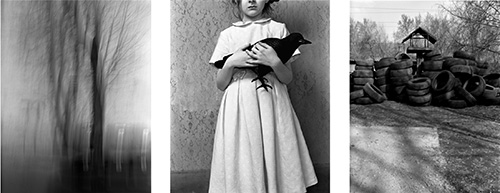 |
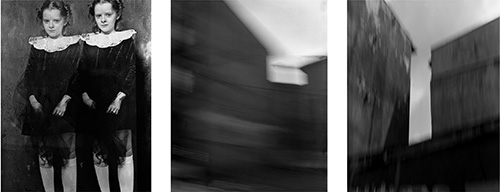 |
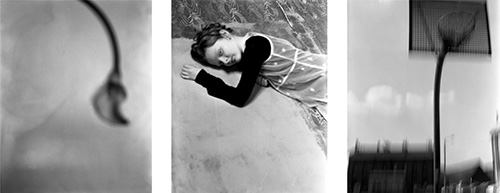 |
 |
Copyright ©2011 Galeria FF ŁDK, Joanna Chudy, Dorota Łuczak |